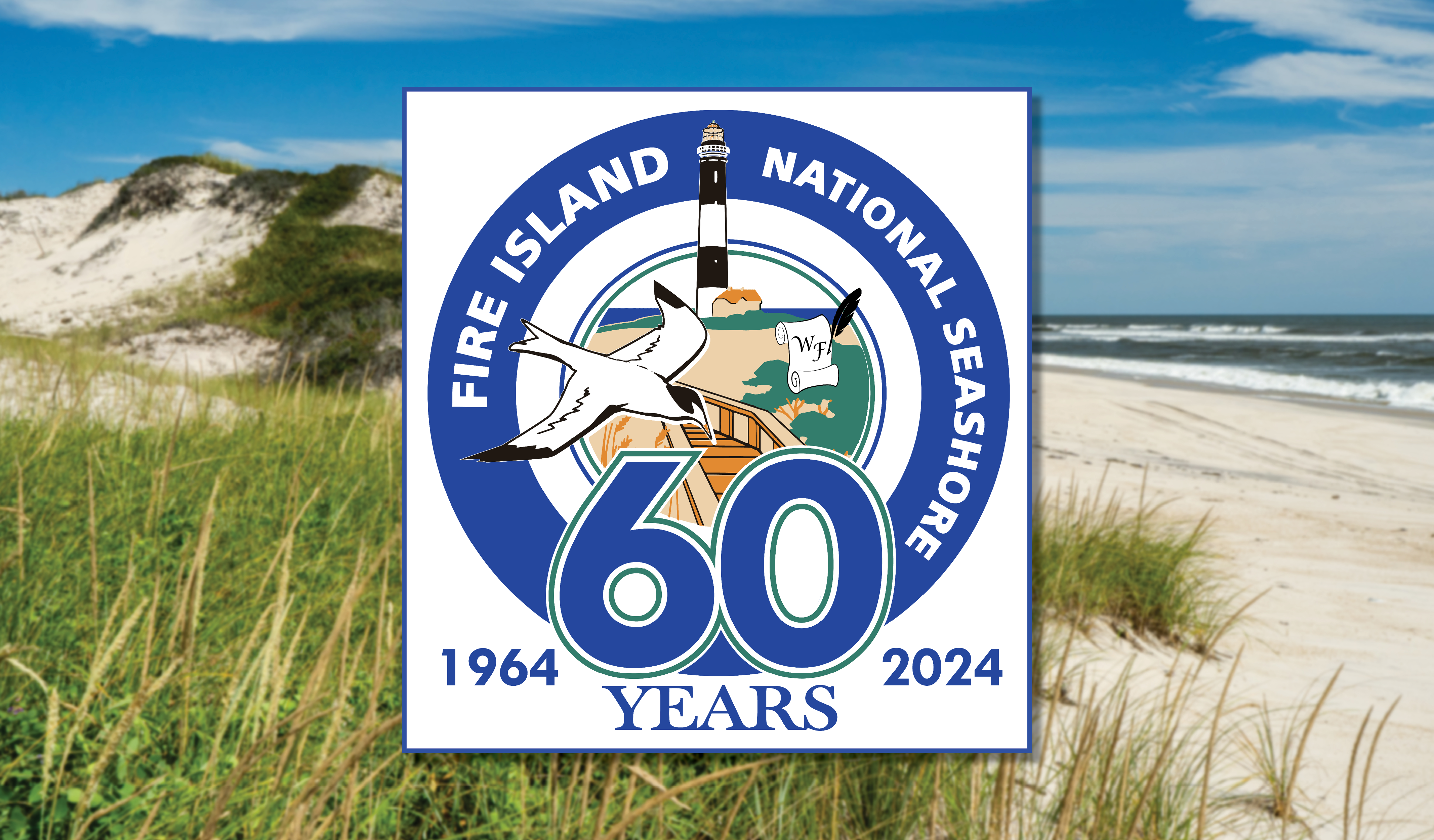
During the entire year of 2024, Fire Island National Seashore is celebrating the 60th anniversary of its establishment as a national park site in 1964. The story of Fire Island’s preservation is one of the meeting of two movements – the conservation and environmental movement of the 1960s that influenced government and elected officials to preserve the remaining special natural spaces that were left on the map, and a grassroots, local resistance to overdevelopment that would alter the character of a barrier island that was a beloved escape for many New Yorkers and Long Islanders. The result is a 26-mile patchwork of seashore that is both locally and federally controlled, where communities and natural and historic places exist side-by-side and are shared with the country as a nationally-significant landscape for all to enjoy. We invite you to learn more about the establishment of Fire Island National Seashore through the timeline below and share your remembrances and photos using the hashtag #FireIsland60 on social media. 
National Park Service 1955 – The National Park Service publishes “Our Vanishing Shoreline,”a report on public access, overdevelopment, and threats to the wildlife and natural landscapes of the Atlantic and Gulf coastlines. The report identified a number of undeveloped seashores for potential protection as public lands, including Fire Island. From the report: “The south shore of Long Island, New York is the most convenient seashore recreation area for the largest population center of the United States. Within a small geographical radius are grouped not less than 9 million people. The State, of course, has done much to provide facilities for satisfying the yearning for a day at the ocean edge, but already overloaded conditions are to be observed at such places as Jones beach, Gilgo and Captree state parks. The western end of Fire Island is occupied by Fire Island State Park, but the opportunity exists, according to the survey, to make public use of that part of the magnificent 32-mile barrier beach that is still relatively undeveloped.” Read the report in its entirety. 
Photo Courtesy of the Long Island State Parks Commission March 1962 – “Ash Wednesday Storm” devastates Fire Island Communities.A severe nor’easter causes widespread damage and flooding on Fire Island in March of 1962, causing breaches in the dunes and nearly 100 homes to be washed away along the south shore. In response, Governor Nelson Rockefeller forms the Temporary State Commission on Protection and Preservation of the Atlantic Shore Front, of which Robert Moses is a member. 
NPS / Fire Island National Seashore Collection 1962 – Robert Moses, Chairman of the Long Island State Park Commission, proposes a road through Fire Island.Moses supported a road running through Fire Island as early as the 1920s-30s, continuing from Ocean Parkway and running through to Westhampton and Quogue. The Temporary State Commission on Protection and Preservation of the Atlantic Shore Front adopted an Army Corps of Engineers erosion plan and added the construction of a highway in response to the March 1962 storm. Arguments for building a road included the idea that a highway structure would anchor barrier island sand in place, preventing erosion. It was also argued that a road would provide access to the beach for thousands of people across the New York metropolitan area.
NPS / Fire Island National Seashore Collection 1962 – Fire Island communities resist Moses' plan for a road.Citizens of Fire Island mount a grassroots resistance to the Commission's plan for a road through Fire Island. The Fire Island Voters Association forms to unify the disparate communities and begins fund raising and a letter writing campaign. Maurice Barbash, a builder from Brightwaters and Fire Island's Dunewood community forms the Citizens Committee for a Fire Island National Seashore and lobbies Secretary of the Interior Stewart Udall and New York elected officials to support the creation of a National Seashore. 
NPS / Fire Island National Seashore Collection 1962 - 1964 – Interior Department signals support for the National Seashore.Interior Secretary Stewart Udall is sympathetic to the 1960s environmental movement and pushes the Kennedy and Johnson cabinets and his Interior Department towards expanding federal lands not only in the American West, but also in the east near the country’s urban populations. Fire Island, along with other sites along the Atlantic coast, were established at national seashores during his tenure as secretary.

NPS / Fire Island National Seashore Collection September 11, 1964 – Fire Island National Seashore is established.as Public Law 88-587 passes congress and is signed by President Lyndon B. Johnson. 
NPS / Fire Island National Seashore Collection 1965 – The William Floyd Estate is added to the National Seashore.The donation of the land of the William Floyd Estate to the newly-founded Seashore is proposed by the Floyd family’s descendants. Congressman Otis G. Pike authors a bill to fold the estate’s lands into the new park’s administration. The law is passed on October 9, 1965. Read more about the William Floyd Estate. 
NPS Photo 1980 – Otis Pike Fire Island High Dune Wilderness Designated.Congress designates the 1,363 acres east of Watch Hill and west of Smith Point County Park as the “Otis Pike Fire Island High Dune Wilderness,” creating the only federally-designated wilderness area in New York State. Learn more about Fire Island's wilderness. |
Last updated: July 23, 2024
